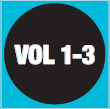The Basement Tapes Outtakes
Although other songs were recorded during these sessions, there are only two “official” outtakes from The Basement Tapes. “Santa Fe” and “Quinn the Eskimo (The Mighty Quinn)” were released officially on The Bootleg Series Volumes 1–3: Rare & Unreleased, 1961–1991 and Biograph. How to describe these two songs? They were recorded in a good mood and a relaxed atmosphere and feature the combination of nonsense and humor characteristic of the album.
 | Quinn The Eskimo (The Mighty Quinn) Bob Dylan / 2:20 |
Musicians: Bob Dylan: vocals, guitar; Robbie Robertson: guitar; Richard Manuel: piano, backup vocals; Garth Hudson: organ; Rick Danko: bass, backup vocals / Recording Studio: Big Pink, West Saugerties, New York: Summer 1967 / Producers: Bob Dylan and the Band / Sound Engineers: Garth Hudson and Pete Dauria / Set Box: Biograph (CD 2) / Release Date: November 7, 1985
Bob Dylan wrote this song during The Basement Tapes sessions in the summer of 1967, obviously inspired by Nicholas Ray’s 1960 movie The Savage Innocents, starring Anthony Quinn as Inuk the eskimo. The hero in Dylan’s tale is an Eskimo named Quinn who has a rare and admirable ability to bring happiness to people around him. In the first verse, Dylan sings, “Ev’rybody’s in despair / Ev’ry girl and boy / But when Quinn the Eskimo gets here / Ev’rybody’s gonna jump for joy.” Should we see a particular message here? In the notes to Biograph, the songwriter says, “‘Quinn the Eskimo,’ I don’t know. I don’t know what it was about. I guess it was some kind of a nursery rhyme.”12
Dylan’s nursery rhyme is not on the album, although Eskimo Quinn appears on the cover. Two takes were recorded during the summer of 1967. The second take appears on the Biograph box set. The strength of the piece lies in the perfect harmony between a rather “serious” folk-rock style and the childish words. Unfortunately, the recording quality is poor. Dylan probably accompanied himself on a 12-string guitar, backed quite soberly and somewhat lethargically by the rest of the band. Did Dylan want to accentuate the disparity between music and lyrics? Danko and Manuel are on backup vocals, giving a small country touch to the song. Surprisingly, toward the end of the song there is the sound of a pedal steel guitar (around 2:08). It may be Robertson playing bottleneck, unless he used the violining technique (with a pedal effect by hand), or he simply played a pedal steel guitar.
When this recording was released in 1985, “Quinn the Eskimo” had already had a successful career. Dylan played the tune with the Band during the concert on the Isle of Wight on August 31, 1969. This version was released on the 1970 album Self Portrait and on Bob Dylan’s Greatest Hits Vol. II in 1971. Meanwhile, the English band Manfred Mann added the tune to their repertoire under the name “Mighty Quinn.” Guitarist Tom McGuinness recalls, “‘The Mighty Quinn’ was not the first choice for the group… I chose a song called ‘Please Mrs. Henry’… But, listening, I saw she was not strong enough, so we recorded ‘The Mighty Quinn.’”73 The Manfred Mann version reached number 1 on the UK singles chart for two consecutive weeks in February 1968.
 | Santa Fe Bob Dylan / 2:10 |
Musicians: Bob Dylan: vocals, guitar; Robbie Robertson: guitar; Garth Hudson: piano; Rick Danko: bass; Richard Manuel: drums / Recording Studio: Big Pink, West Saugerties, New York: Fall 1967 Producers: Bob Dylan and the Band (?) / Sound Engineer: Garth Hudson / Set Box: The Bootleg Series Volumes 1–3: Rare & Unreleased, 1961–1991 (CD 2) / Release Date: March 26, 1991
Santa Fe is the name of the capital of New Mexico and of the trail that, before the completion of the transcontinental railroad, allowed trade between the Midwest and the Southwest United States, and even on into Mexico. The city, full of history, has attracted many artists since the 1940s. It probably inspired Bob Dylan to write this song with an alert rhythm and impenetrable lyrics. It is not clear if “Santa Fe” refers to the city or to a woman. There is also a fundamental difference between the lyrics as published by Dwarf Music in 1973 and the lyrics sung, except for the first verse. The remaining text was rewritten. Because of the poor quality of the recording, it is difficult to fully understand some words sung by Dylan, but as John Bauldie mentions in the booklet accompanying The Bootleg Series Volumes 1–3, the song is “a typical combination of nonsense and fun, just for the hell of it, really…”25
There are no written records for these 1967 recording sessions. John Bauldie cites Levon Helm as a drummer of “Santa Fe,” whereas Sid Griffin (in his excellent his book Million Dollar Bash, an in-depth study of The Basement Tapes) mentions Richard Manuel.73 By listening to the track, it is clear that the drummer cannot be a professional, especially one of Helm’s abilities. The drums are played with brushes, and the performance, although credible, floats in part and lacks rigor. Similarly, no organ is audible on the track, only a piano. If Manuel was at the drums, Hudson played piano. It is difficult to distinguish the other instruments. The piece is poorly recorded, but there seems to be a mandolin or a guitar with a capo placed high enough on the handle (Dylan), an electric guitar (Robertson), and a bass played with a pick (Danko). It is even possible that the song was recorded at Dylan’s house at what were known as the “Red Room Sessions” during the early recordings of The Basement Tapes.